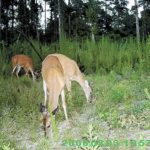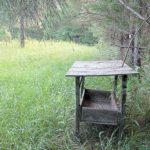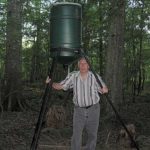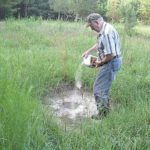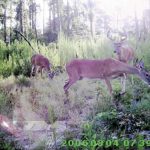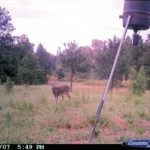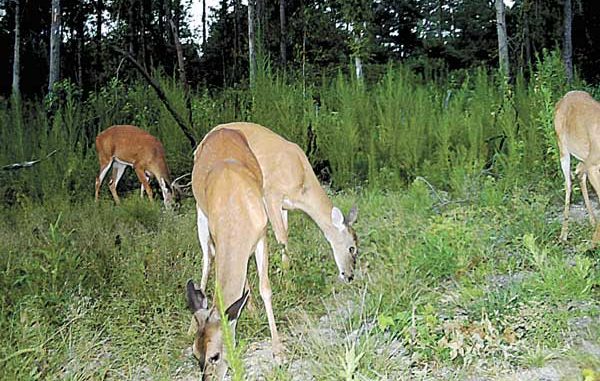
Got a small tract of land? You can grow bigger bucks than you think.
I’d never heard the term “small ball” until I started watching the LSU Tigers baseball team in recent years.For the uninformed, small ball involves getting on base any way you can — scratch singles, bunts, walks, base stealing, getting hit by a pitch.
By way of contrast, “gorilla ball” is a totally different animal. When you hear this term, as it applies to playing baseball, you’re looking for baseballs to fly out of the stadium with regularity. LSU’s Ryan Clark and Blake Dean conducted a clinic on baseball smashing this past season, carrying the Tigers to the College World Series; Clark’s 28 home runs set the national standard for round-trippers.
When you think of managing property for quality bucks, a picture forms in your mind of vast acres of prime and fertile alluvial soils with hundreds, if not thousands, of acres of mast-producing oaks dotted with food plots growing lush deer foods. On such lands, some of the state’s most impressive bucks are taken each year.
The consensus is that you have to have vast acres on prime soils to grow big bucks. Gorilla-ball management, if you will.
I visited with a deer hunter recently who not only thinks differently, he has proven it. Fred Futch of Farmerville is using the “small-ball” philosophy to his advantage in managing the deer population on the handful of acres he controls.
Futch, his son and two grandsons hunt on his family land in Union Parish, land broken into four parcels with total acreage of less than 100.
Not only are we talking small acres, the land Futch manages would be generally described as poor land — red clay hills and pine trees with only a creek or two splitting the pines. As somebody once said, land such as this would be hard pressed to grow a healthy armadillo, much less quality deer.
Just about every deer hunter I know wants to improve his chances at a big buck or two during hunting season. Articles are pored over and videos dissected on what to do to see more and bigger bucks on your hunting area. Many hunters come away dejected because they think they must have access to several thousand acres of prime property to improve their chances at attracting quality deer.
Futch doesn’t see it that way. The 72-year-old licensed professional counselor from Farmerville is playing small ball quite successfully on four small parcels of land. Two of the plots are 10 acres each; one contains 35 acres and the other a whopping 40 acres. These unlikely deer magnets are located about 20 miles north of Farmerville near the Arkansas border.
“I never got into deer hunting seriously; I always preferred hunting quail and squirrels. However,” said Futch, “I have a son and two grandsons who love deer hunting, and I’m trying to make things the best I can for them.”
There are five box stands, each within sight of a deer feeder and salt lick Futch has established. He also has set up trail cameras at each stand site.
“I try and have a quality deer-hunting spot from each of the stands, and it seems to have helped,” he said. “Before we started trying about five years ago to manage the deer we have on our property, we’d shoot maybe one or two decent bucks during the season.
“Last season, we took six good bucks, 6-points and above, and our cameras showed there were more really nice bucks on the area that we didn’t get a chance at while we were on our stands.”
In a year when a college baseball team doesn’t have the power hitters that LSU did this past season, a good coach has to rely on the small stuff to experience success. Perhaps it is even more important in such times to put together a plan to push runs across the plate.
Futch has done just that, and he starts planning in spring for the eventual deluge of hits and runs he hopes to score once deer season kicks in come fall and winter.
“Around the end of April and early May, we’ll set up our salt licks,” he said. “I put about 25 pounds of salt and a mineral block in each, and I’ll add salt as needed throughout the summer; deer like salt in hot weather.
“Beginning in June, I start adding a commercial attractant, ‘C’mere Deer,’ to the salt licks. By August, we stop using salt and add pure attractant. We’ve found that deer prefer the ‘C’mere Deer’ over salt, but it’s too expensive to use all year. Also in August, we’ll start throwing corn with the feeders on a limited basis. We set it to throw once a day at mid-day for about 20 seconds.
“Regarding establishing salt licks, most of ours are in shady areas near deer trails. However, I have learned that it doesn’t really matter where you start a salt lick. It’s sort of like that movie theme — ‘If you build it, they will come.’ There was no good place to start a lick near one of our stands, so I cleared grass out of a spot in a coastal Bermuda field, and before the week was out, the deer were using it, although my son thought I was wasting my time.”
Futch said that the lick is now a foot deep from all the deer activity.
Another tactic Futch uses has to do with another food source he provides — rice bran.
“I’ve found that deer really love that stuff, and it’s cheaper than other feeds,” he said. “However, rain will turn it into a hard cake, so I built small troughs with covers where I pour the rice bran. Deer don’t hesitate to stick their heads in there to eat the bran.
“We get the trail cameras set up and going by September and change the corn feeders to where they throw twice a day, 10 seconds each time.”
In October, Futch says that his son and grandsons help him clear shooting lanes and open four-wheeler roads with herbicide.
“We check our cameras weekly, add attractant to salt licks and corn to the feeders as needed,” he said. “Then come November, we start waiting for the bucks to come in.”
While most professional wildlife managers suggest taking as many does as you can during the season, Futch is somewhat conservative in his approach to doe harvest.
“We keep an eye on the does with our cameras, and we take a few for the freezer once the fawns get enough age to make it on their own,” he said. “We don’t shoot small bucks, especially button bucks and spikes. The only bucks we take are mature deer, unless we see one that is obviously inferior.”
The result?
This small party of hunters has taken one 11-point, three 9-points, eight 8-points and two 6-points over the past few hunting seasons. That’s not bad at all for small parcels of hill country land generally considered too poor to support quality deer.
“It is really rewarding for me to fix up a place for the boys to have success here on our family property,” Futch said. “I seldom take a gun, but I enjoy sitting with the grandsons and watching them have success.”
Grandson Hunter Futch is 16, while the other, Luke Albritton, is 13.
“These boys started out real young hunting with a .410,” he said. “It has been rewarding to watch them mature into serious deer hunters and to know that we did it here on our little parcels of land.
“Some folks say that unless you have at least 2,000 acres to manage for deer, you can forget about having quality deer. I just want to show folks what can be done on small acreage if you have a plan and follow it every year.”
In other words, a flurry of scratch singles sometimes produces better results than the occasional round-tripper.
